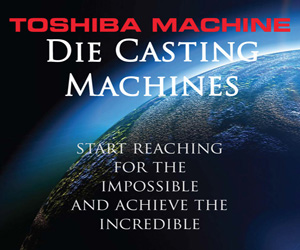The unavoidable fact is that die casting tooling costs are high, among the highest of any production process. This is because, due to the nature of die casting, the dies are subjected to exceptionally severe operating conditions over the course of normal service.
Some of the factors impacting the life and costs of die casting tooling include:
- Tool material – Die casting dies are tooled out of the highest quality engineered tool steel available, which is more expensive than standard steels but necessary for proper functionality.
- Temperatures – Metal becomes molten at extremely high temperatures and introducing it to dies, no matter how good the quality of the die material, leads to some level of thermal shock and stress.
- Die wash – Also known as die steel erosion, die wash is when metals with a tendency to attack tool steel flow over die surfaces, especially at irregular, small, or delicate die features.
Luckily, the high production runs typical of die casting help to keep the costs manageable, as does the fact that die casting often eliminates the need for costly secondary assembly and machining operations. There are also a number of ways to mitigate the costs of die casting tooling, starting with the design phase of your product.
Value of scrap sold outside the plant
- Non-recycled scrap is sold outside.
- Scrap price is only a small fraction of purchase price.
Scrap generated by finish machining operations
- Die castings usually require very little metal removal by finish machining operations.
Component material volume
- Volume of material in a component varies with manufacturing process.
- Die castings are often made with very thin walls and carefully located reinforcing features.
To learn more about die casting tooling costs, where they come from, and how you can help reduce them with smart part design, watch the video or contact NADCA today.








